The origins of Norse mythology are shrouded in mystery and fascination, captivating the minds of both scholars and fans of mythology alike. From the creation of the Nine Worlds to the mighty gods and formidable giants, Norse mythology offers a rich tapestry of ancient stories and beliefs. Exploring the depths of these myths and legends takes us on a thrilling journey through a world inhabited by gods, giants, and fantastical creatures. Join us as we delve into the captivating origins of Norse mythology, uncovering the enchanting tales of creation, the powerful gods, and the epic battles that shape the fate of the cosmos.
Contents
- The Creation of the Nine Worlds
- The Mighty Gods of Norse Mythology
- The Formidable Giants of Norse Mythology
- The Ragnarok Prophecy: The End and Rebirth of the World
- Conclusion
-
Frequently Asked Questions
- 1. What are the Nine Worlds in Norse mythology?
- 2. Who is Ymir and what role does he play in the creation of the Nine Worlds?
- 3. Who are the creators of the cosmos in Norse mythology?
- 4. What is the significance of Midgard in Norse mythology?
- 5. What are the other realms besides Asgard and Midgard?
- 6. Who are the Aesir and the Vanir?
- 7. What role do the dwarves play in the Norse cosmos?
- 8. How do the gods and giants interact in Norse mythology?
- 9. What is the purpose of the Nine Worlds in Norse mythology?
- 10. Are the Nine Worlds of Norse mythology similar to other mythological cosmologies?
- References
-
Frequently Asked Questions
- 1. What are the Nine Worlds in Norse mythology?
- 2. How were the Nine Worlds created?
- 3. Who is Odin, the Allfather?
- 4. What is the role of Thor, the God of Thunder?
- 5. Who is Freya, the Goddess of Love and Beauty?
- 6. What is Loki known for in Norse mythology?
- 7. Who was Ymir, the First Giant?
- 8. Who are the Jotnar, the Frost Giants?
- 9. What is the significance of the Ragnarok prophecy?
- 10. How does Norse mythology continue to influence modern culture?
- References
- Read More
The Creation of the Nine Worlds
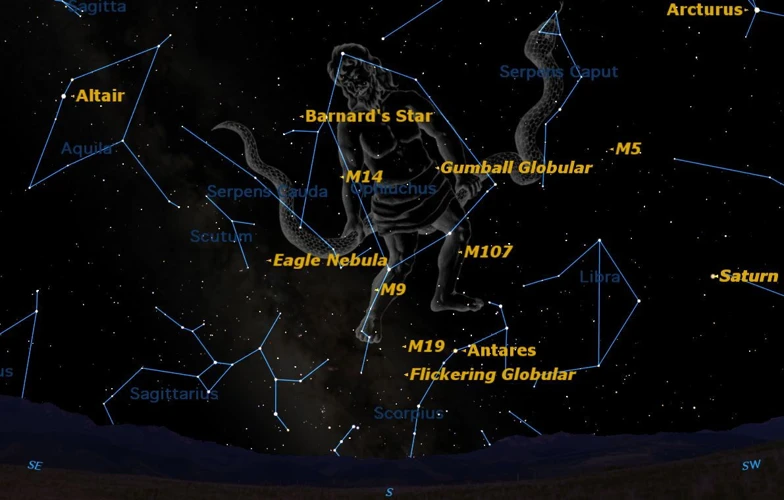
In the vast expanse of emptiness before time, the Nine Worlds came into existence, each with its own unique characteristics and inhabitants. The first world, Niflheim, was a realm of icy cold and darkness. It stood in stark contrast to Muspelheim, the world of fire and heat. When the fire of Muspelheim met the icy mists of Niflheim, it gave birth to Ymir, the first being and the progenitor of all giants. As Ymir slept, he sweated profusely, giving life to the giants born from his armpits.
From the convergence of water and ice, the great cow Audumbla emerged. She fed on the ice and, in turn, nourished Ymir with her milk. Audumbla’s actions inadvertently led to the creation of another being. As she licked the ice, a handsome figure named Buri emerged, becoming the progenitor of the Aesir gods.
Buri had a son named Bor, who went on to marry Bestla, a giantess, together they had three sons; Odin, Vili, and Ve. These three brothers would eventually become the creators of the cosmos. Odin and his brothers were intent on defeating the giants. They killed the giant Ymir, and from his body, they fashioned the world we now know as Midgard. The brothers used Ymir’s flesh to create the earth, his blood to form the oceans, and his bones to construct mountains. They then fashioned the sky from Ymir’s skull, placing it above Midgard.
The creation of the Nine Worlds was complete. Midgard, the home of humanity, stood at the center of this cosmic web, surrounded by eight other realms, each with its own distinct inhabitants and wonders. These worlds included Asgard, the realm of the Aesir gods, Jotunheim, the stronghold of the frost giants, and Svartalfheim, the domain of the dwarves renowned for their craftsmanship.
This elaborate tapestry of worlds, interconnected yet distinct, forms the foundation of the Norse cosmos. It is within this vibrant and complex universe that the gods, giants, and various other mythical beings navigate their roles and destinies. The creation of these realms set the stage for the epic tales and legends that would unfold, shaping the mythology and folklore of the Norse people for generations to come. To learn more about the mighty gods and formidable giants who inhabit these realms, continue reading here.
The Mighty Gods of Norse Mythology
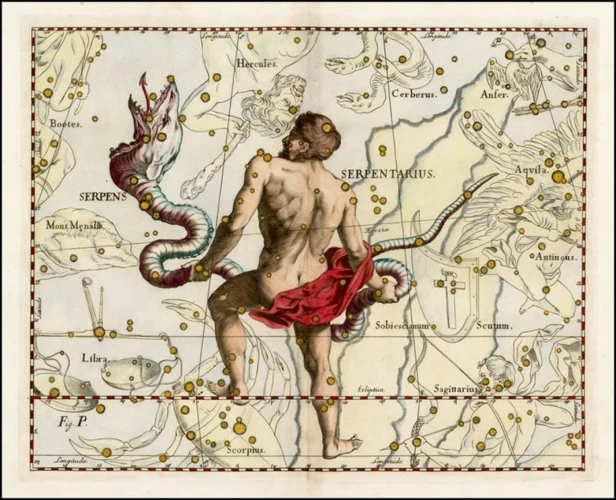
The Norse pantheon is filled with a diverse array of mighty gods, each possessing unique powers and characteristics. One of the most prominent figures in Norse mythology is Odin, the Allfather and ruler of Asgard. Known for his wisdom and knowledge, Odin is accompanied by his two ravens, Huginn and Muninn, who bring him information from across the Nine Worlds. Another iconic deity is Thor, the God of Thunder, renowned for his strength and courage. He wields the mighty hammer Mjölnir and is the defender of Asgard and Midgard. Freya, the Goddess of Love and Beauty, graces the pantheon with her enchanting presence, symbolizing fertility and desire. Lastly, Loki, the Trickster God, brings mischief and chaos to both gods and giants, often appearing in various forms and playing a pivotal role in the events that unfold in Norse mythology. These gods, along with countless others, shape the intricate tapestry of the Norse pantheon, each contributing their own unique abilities and personalities. To explore more about the gods and their fascinating tales, click here.
1. Odin, the Allfather
Odin, known as the Allfather, is one of the most prominent and revered gods in Norse mythology. He is the ruler of Asgard, the realm of the Aesir gods. As the god of war, wisdom, and poetry, Odin possesses an array of unique qualities and powers that set him apart from other gods.
Odin is often depicted as an elderly man with a long white beard, wearing a wide-brimmed hat and a cloak. He has only one eye, having sacrificed the other in exchange for knowledge from the Well of Urd, a sacred well situated beneath the roots of the cosmic tree Yggdrasil. This act emphasizes Odin’s thirst for wisdom and his willingness to make personal sacrifices to acquire knowledge and foresight.
One of Odin’s most distinctive features is his association with ravens. He has two loyal ravens named Huginn and Muninn, meaning “Thought” and “Memory” respectively. These intelligent birds fly across the Nine Worlds, providing Odin with valuable information and insights. They symbolize his all-seeing and all-knowing nature.
In addition to his avian companions, Odin also possesses a powerful weapon, the magical spear Gungnir. It is said that this spear never misses its target and grants Odin victory in battle. Alongside his spear, Odin also possesses a magnificent eight-legged horse named Sleipnir, a creature unparalleled in speed and strength. Odin rides Sleipnir as he traverses the realms, venturing into dangerous territories.
Odin’s wisdom and knowledge extend beyond mere battle prowess. He is the patron of poetry and inspires skalds, ancient Scandinavian poets, with his gift of poetic inspiration. Odin’s pursuit of knowledge also led him to discover the secrets of the runes, a system of ancient Germanic writing with mystical properties.
As the Allfather, Odin plays a vital role in the mythology, acting as a guide and shaping the destinies of gods, giants, and humans alike. He possesses a complex and multifaceted nature, representing both the noble and honorable aspects of the divine, as well as the cunning and manipulative characteristics of a wise ruler.
To delve deeper into the intriguing aspects of Odin’s character and the other gods and giants of Norse mythology, continue reading here.
2. Thor, the God of Thunder
Thor, the mighty god of thunder, is one of the most prominent figures in Norse mythology. Known for his immense strength, courage, and battle skills, Thor serves as a protector of both gods and humans. With his trusty hammer, Mjolnir, he defends Asgard and Midgard from the threats of giants and other malevolent forces.
Appearance and Abilities:
Thor appears as a brawny and robust figure, often depicted with flowing red hair and a fierce beard. He is usually seen wearing his enchanted belt, Megingjord, which enhances his strength. Additionally, he owns a pair of iron gloves, Jarngreipr, and wears iron boots, which grant him extra power and stability.
Thor’s most notable ability is controlling thunder and lightning, which he accomplishes using his mighty hammer, Mjolnir. This sacred weapon not only allows him to summon the destructive forces of lightning but also grants him the power of flight and the ability to conjure storms. Whenever Thor hurls Mjolnir, it always returns to his hand, a testament to the weapon’s connection with its wielder.
Protector of Asgard and Midgard:
As the protector of Asgard, Thor plays a pivotal role in defending the realm of the gods from external threats. He stands as the first line of defense against the giants, battling them in fierce conflicts that test his strength and courage. Thor’s willingness to confront these formidable foes ensures the safety of Asgard and maintains the delicate balance between the realms.
Thor’s protective nature extends beyond Asgard to Midgard, the realm of humans. He takes a particular interest in safeguarding humanity against the forces of chaos and darkness. Often depicted as a fearless warrior, Thor’s interventions in Midgard range from battling mythical beasts to defending humanity from the treachery of giants.
Adventures and Feats:
Thor’s heroic adventures are legendary and are chronicled in numerous Norse sagas. One famous tale recounts his journey to Jotunheim, the realm of the frost giants. Disguised as a giant, Thor outwitted the Jotun king and his kin, ultimately proving his might and cunning. Another notable episode involves his encounter with Jormungandr, the monstrous serpent that encircles the world. Thor’s epic battle against the serpent during Ragnarok showcases his indomitable spirit and courage.
Thor’s formidable reputation and unwavering dedication to protecting the gods and humans have earned him the admiration and reverence of many. He exemplifies the noble qualities valued in Norse society, such as bravery, loyalty, and honor.
In the intricate web of Norse mythology, Thor’s presence electrifies the narrative, embodying the power of lightning and the strength of a true protector. With each thunderous roar and swing of Mjolnir, Thor reminds us of the unyielding resilience and unwavering might that resides within the Norse pantheon.
3. Freya, the Goddess of Love and Beauty
Freya, the Goddess of Love and Beauty, is one of the most revered and beloved figures in Norse mythology. With her radiant beauty and enchanting presence, Freya captivates the hearts of both gods and mortals alike. She is the daughter of Njord, the god of the sea, and the twin sister of Freyr, the god of fertility and abundance. As the goddess of love, Freya governs passion, desire, and affection in all its forms, from romantic love to familial bonds.
Often depicted as a goddess adorned in a cloak of falcon feathers, Freya exudes an aura of captivating allure. She is known for her charm, grace, and sensual charm, as well as her profound knowledge of the magical arts and seidr, a form of Norse shamanism. As the goddess of beauty, Freya is associated with desire, sensuality, and physical attractiveness.
Freya’s domain extends beyond matters of the heart, encompassing love, fertility, and prosperity. She is also associated with war and battle, commanding the souls of fallen warriors to her realm of Folkvangr. Freya plays a pivotal role in choosing half of the warriors slain in battle, while the other half are sent to Odin’s Valhalla.
To harness her powers of love and beauty, many mortals seek Freya’s aid through prayers and offerings. She is often depicted with a necklace called Brisingamen, a renowned symbol of her power and beauty. Freya’s influence extends to various aspects of life, from romantic relationships to the cultivation of a bountiful harvest.
Freya’s complex character embodies both vulnerability and strength, making her an intriguing and multifaceted figure in Norse mythology. Her unwavering loyalty to her loved ones, fierce determination, and vibrant spirit make her a revered goddess among the pantheon of Norse deities.
Freya, the Goddess of Love and Beauty, holds a prominent place in Norse mythology. With her ethereal enchantment and divine presence, she governs the realms of desire, affection, and sensuality. Whether guiding the hearts of mortals or commanding warriors in battle, Freya exemplifies the power of love and beauty in all its forms.
4. Loki, the Trickster God
Loki, often described as the trickster god, is one of the most complex and enigmatic figures in Norse mythology. Known for his mischievous nature and unpredictable actions, Loki is a shape-shifter and a master of deceit. His parentage is a subject of debate, as some sources suggest he is the son of two giants, while others claim that he is the offspring of Odin himself.
Loki is characterized by his cunning and quick wit, often using his abilities to manipulate others for his own amusement or to serve his own interests. His mischievous acts range from harmless pranks to more malicious schemes, often causing chaos and disruption among the gods and their realms.
One of Loki’s most infamous actions was his role in the death of Baldr, the beloved son of Odin and Frigg. He orchestrated the events leading to Baldr’s demise by exploiting Frigg’s omission to extract a promise from all things not to harm her son. Loki took the form of a mistletoe arrow (the only thing that was not sworn to protect Baldr) and handed it to Baldr’s blind brother, Höðr, who unwittingly shot and killed him.
Loki’s involvement in this tragedy led to his eventual punishment. The gods captured him and bound him with the entrails of one of his sons. As he writhed in agony, a poisonous snake was placed above his head, with venom dripping onto his face, causing excruciating pain. His faithful wife, Sigyn, tried to ease his suffering by catching the venom in a bowl, but when she had to empty it, the venom would reach Loki and torment him once more.
Despite his darker deeds, Loki also played a crucial role in the realm of the gods. On several occasions, his cunning and shape-shifting abilities proved invaluable in resolving conflicts and helping the gods overcome challenges. He has aided Thor in recovering his stolen hammer, Mjölnir, and helped the gods escape from dangerous situations.
Loki’s complexity and ambiguous nature make him a captivating character in Norse mythology. He embodies the duality of both chaos and cunning, leaving an indelible mark on the stories and the overall dynamic of the Norse pantheon. While his actions often bring about unfortunate consequences, Loki’s presence ensures that the gods’ ventures are always filled with intrigue and unpredictability.
The Formidable Giants of Norse Mythology
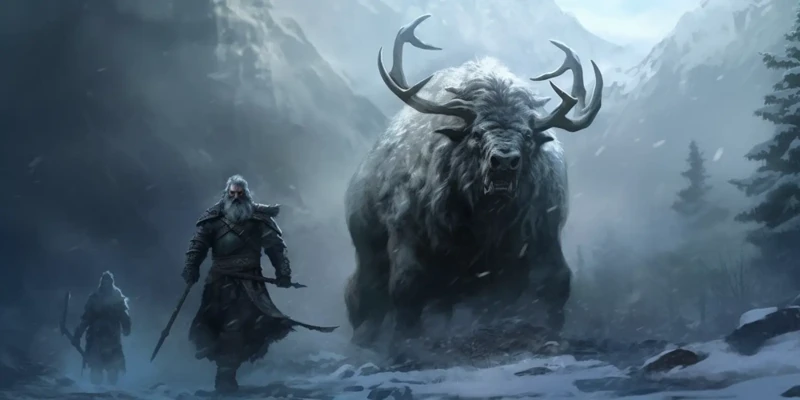
In Norse mythology, the giants are formidable and influential beings that play a significant role in shaping the cosmos. One of the prominent giants is Ymir, the first giant who emerged during the creation of the Nine Worlds. From Ymir sprang forth the Jotnar, the frost giants who reside in Jotunheim, a realm of extreme cold. These giants possess incredible strength and size, often depicted as towering figures capable of causing great destruction. Another notable giant is Surt, the fire giant who wields a flaming sword and hails from Muspelheim, the world of fire. Surt is destined to unleash his fiery wrath during Ragnarok, the cataclysmic event that signals the end of the world. Additionally, Skadi, the giantess of winter, is a figure associated with the icy landscapes and harsh conditions during this season. The giants in Norse mythology embody primal forces and represent the opposing forces to the gods, fueling the tension and conflicts that permeate this rich and vibrant mythological tradition.
1. Ymir, the First Giant
Ymir, known as the First Giant in Norse mythology, was a primordial being born from the convergence of fire and ice. Emerging in the realm of Ginnungagap, the vast void between Muspelheim and Niflheim, Ymir embodied the chaotic nature of the cosmos in its infancy. Ymir was a colossal creature, immense in size and power. From his sweat, the race of frost giants was born, while his cow-like udders provided nourishment for their survival. This initial act of creation marked the beginning of the balance between life and death, light and darkness within the Norse cosmos.
Ymir’s existence was not without conflict. The gods Odin, Vili, and Ve, who would later become powerful figures in Norse mythology, grew resentful of Ymir’s authority. Recognizing the threat he posed, the brothers conspired to overthrow the First Giant and bring order to the chaotic realms.
In a daring act, the three brothers attacked Ymir, ultimately slaying him. As Ymir fell, torrents of blood spilled from his body, resulting in an immense flood that drowned all but two frost giants, Bergelmir and his wife who escaped on a wooden vessel. The brothers used Ymir’s body to create the world we know as Midgard, while his bones became the mountains, his flesh turned into the earth, and his skull formed the sky.
Ymir’s demise marked a turning point in the Norse cosmos, solidifying the dominance of the gods and positioning them as the rightful rulers of Asgard and the Nine Worlds. The legacy of Ymir, the First Giant, continued to reverberate throughout Norse mythology, shaping the eternal struggle between the gods and the giants, who sought to reclaim their lost power and influence.
Ymir’s role as the First Giant in Norse mythology symbolizes the primordial chaos from which the universe was born. His existence and subsequent demise set the stage for the power dynamics and intricate narratives that intertwine the gods, giants, and other mythical beings within the rich tapestry of Norse mythology.
2. Jotnar, the Frost Giants
Jotnar, also known as the Frost Giants, are a formidable race of beings in Norse mythology. They reside in the icy realm of Jotunheim, a land characterized by towering mountains, freezing temperatures, and treacherous landscapes. These giants are known for their incredible size and strength, often depicted as towering over the gods themselves. With their frosty blue skin and menacing presence, the Jotnar strike fear into the hearts of both gods and mortals.
Unlike the Aesir gods who are associated with order and civilization, the Jotnar represent chaos and primal forces. They are often portrayed as antagonistic figures, engaging in epic battles and conflicts with the gods. One of the most famous Jotnar is Thrym, who stole Thor’s hammer, Mjolnir, and demanded Freya as his bride in exchange for its return. Thor, the god of thunder, disguised himself as Freya and infiltrated Jotunheim to retrieve his hammer, leading to a fierce battle between the gods and the giants.
While the Frost Giants are often depicted as powerful antagonists, not all of them are inherently evil. Some Jotnar, such as Skadi, the giantess of winter, are believed to have more ambivalent or complex personalities. Skadi, in particular, sought revenge for the death of her father and eventually married the god Njord. She also became associated with skiing and winter sports, highlighting her connection to her wintry homeland.
The Jotnar not only pose a physical threat but also embody the forces of nature, showcasing their primal and untamed essence. Interestingly, in some Norse myths, the Jotnar are depicted as the ancestors of humanity. This highlights the underlying themes of duality and interconnectedness within Norse mythology, where gods and giants share familial ties and the boundaries between chaos and order blur.
The Frost Giants play a significant role in the rich tapestry of Norse mythology, serving as powerful adversaries and complex characters that challenge the gods. Whether engaged in epic battles or embodying the untamed forces of nature, these giants add depth and intrigue to the captivating world of Norse mythology. To learn more about the gods, giants, and their interwoven fates in Norse mythology, continue reading here.
3. Surt, the Fire Giant
Surt, the fearsome Fire Giant, stands as a prominent figure in Norse mythology. As the ruler of Muspelheim, the fiery realm of heat and flames, Surt wields tremendous power and possesses an uncontrollable yet mesmerizing presence. It is said that Surt is destined to play a pivotal role in the apocalyptic event known as Ragnarok, where he will lead the charge against the gods in a cataclysmic battle.
Described as having a flaming sword that illuminates the darkness, Surt embodies the destructive forces of fire and is often depicted with a blazing mane of fiery hair and a fierce countenance. His very essence symbolizes the unrelenting power and fury of nature’s most destructive element. Surt’s association with fire extends beyond his physical appearance, as his realm, Muspelheim, is a realm of eternal heat and flames.
According to the prophecies, during Ragnarok, Surt will ride forth from his fiery domain, wielding his piercing sword and leading his legions of fire giants in a final assault on the gods and the realms. His arrival marks a turning point in the apocalyptic events, as he sets ablaze the world with his unquenchable flames. It is believed that the clash between Surt and the gods will bring about the destruction of Asgard, the realm of the gods, and a rebirth of the cosmos.
Surt’s role as the harbinger of destruction and catalyst for the rebirth of the world highlights the cyclical nature of Norse mythology. In the midst of destruction, there is always the promise of renewal and the opportunity for new beginnings. Surt’s fiery presence embodies the transformative power of destruction, paving the way for the birth of a new world in the aftermath of Ragnarok.
As one of the formidable giants in Norse mythology, Surt stands as a symbol of both chaos and potential rebirth. His fiery nature and pivotal role in the apocalyptic events make him a figure of immense importance within the rich tapestry of Norse mythological lore. Exploring the intricacies of Surt’s character and his impact on the mythological narrative offers a deeper understanding of the complex interplay between gods, giants, and the fates of the Nine Worlds.
4. Skadi, the Giantess of Winter
Skadi, the Giantess of Winter, is a fascinating figure in Norse mythology. She is known for her fierce nature, strength, and connection to the frigid winter months. Skadi is often depicted as a towering and formidable giantess, exuding a commanding presence wherever she goes.
According to the myth, Skadi was the daughter of Thjazi, a prominent frost giant. Seeking revenge for her father’s death at the hands of the gods, Skadi embarked on a mission to avenge him. She donned her armor, armed herself with a bow and arrow, and journeyed to Asgard, the realm of the gods.
Upon arriving in Asgard, Skadi demanded restitution for her father’s death. The gods, acknowledging her power and determination, agreed to hear her plea. In an unexpected twist, the gods proposed a compromise. They offered Skadi a marriage proposal to one of them, with the condition that she could only choose her groom by looking at their feet.
Skadi agreed to the proposal but did not know who she would choose. She took a veil and covered her eyes, allowing herself to pick a husband without visual bias. Skadi intended to choose the god Baldr, assuming that his feet would be the softest and most beautiful. However, when she saw a pair of strikingly attractive feet, she assumed they belonged to Baldr and chose them.
To her surprise, the feet actually belonged to Njord, the god of the sea and wind. Njord lived by the coast, while Skadi thrived in the icy mountains. Despite their differences, they attempted to make their marriage work. They agreed to spend nine nights in Skadi’s frosty abode, then return to Njord’s seaside home for another nine nights. However, the arrangement proved challenging as their environments were incompatible. Skadi longed for the snowy peaks, while Njord yearned for the sounds of crashing waves.
Eventually, Skadi and Njord decided to part ways amicably. Skadi returned to her beloved mountains, where she resumed her role as the Giantess of Winter. She hunted and skied across the snowy landscapes, embracing her connection to the cold and desolate season. Skadi’s influence brought the harsh beauty of winter to the realms, reminding the gods and humans of nature’s ever-changing cycles.
Skadi’s story reflects the complexities of relationships and the pursuit of justice. She symbolizes the strength and resilience of nature’s forces, reminding us of the power and beauty found in the depths of winter. The tale of Skadi serves as a reminder that even in the harshest of environments, there is a unique and awe-inspiring beauty to be discovered.
The Ragnarok Prophecy: The End and Rebirth of the World
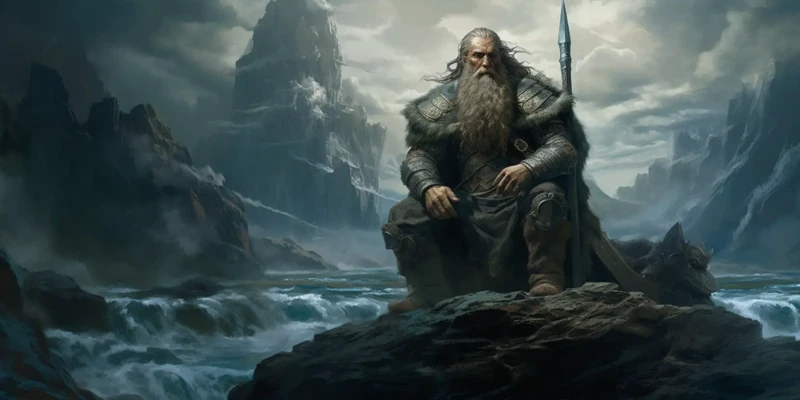
The Ragnarok Prophecy is a pivotal event in Norse mythology, foretelling the ultimate fate of the gods and the world itself. According to the prophecy, the forces of chaos and destruction will converge, leading to a cataclysmic battle that will bring about the end of the world as it is known. This apocalyptic event, known as Ragnarok, will see the gods facing off against their ancient enemies, the giants.
In this final battle, mighty gods like Odin, Thor, and Freya will clash with formidable foes such as Jormungandr, the world serpent, and Fenrir, the monstrous wolf. The skies will darken, and the earth will tremble as gods and giants unleash their powers in an epic struggle for supremacy.
One of the key figures in the Ragnarok Prophecy is Loki, the trickster god. Loki, who was once a friend and ally of the gods, will ultimately turn against them, leading the forces of chaos into battle. It is said that Loki will free the monstrous wolf, Fenrir, who will go on a rampage, devouring everything in its path. Similarly, Jormungandr, the world serpent, will rise from the depths of the sea, spewing venom and laying waste to the land.
As the battle rages on, many of the gods will meet their demise. Odin, the Allfather, will confront the giant wolf Fenrir, and despite his wisdom and power, he will fall victim to the beast’s jaws. Thor, the God of Thunder, will engage in a fierce battle with Jormungandr, managing to slay the serpent, but succumbing to its deadly venom shortly after. Freya, the Goddess of Love and Beauty, will face the giant Surt, the bringer of fire, in a battle that will result in her own demise.
Amidst the chaos and destruction, the world will be engulfed in flames, and the realms of the cosmos will be consumed. However, the Ragnarok Prophecy does not spell eternal doom. From the ashes of the old world, a new one will be born, and a handful of gods and humans will survive to rebuild and repopulate the Nine Worlds.
The cycle of creation and destruction is an intrinsic part of Norse mythology, and the Ragnarok Prophecy represents the ultimate expression of this duality. While the battle brings devastation and the loss of beloved gods, it also signifies the potential for renewal and the chance for new beginnings. The Ragnarok Prophecy has captivated generations with its dramatic narrative, showcasing the power of mythology to explore themes of conflict, sacrifice, and the cyclical nature of existence.
Conclusion
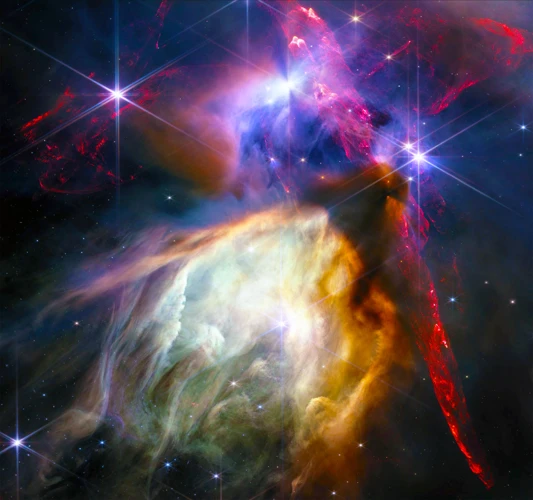
In conclusion, the fascinating origins of Norse mythology take us on a captivating journey through the creation of the Nine Worlds, the rise of the mighty gods, and the formidable giants. The intricate web of interconnected realms, from the icy Niflheim to the fiery Muspelheim, gives birth to a rich and vivid mythological cosmos. The tales of the gods, such as Odin, Thor, Freya, and Loki, are filled with heroism, wisdom, and trickery, capturing the imagination of generations. The giants, with their immense power and elemental forces, add a sense of danger and awe to the mythology. The prophecies of Ragnarok, the ultimate battle between gods and giants, remind us of the cyclical nature of creation and destruction, and the potential for rebirth. Norse mythology, with its captivating characters and epic narratives, continues to inspire and intrigue us today. It offers a glimpse into an ancient worldview, where gods and giants shaped the destiny of the cosmos. Exploring these mythological tales allows us to connect with the cultural heritage of the Norse people and appreciate the enduring power of storytelling. As we delve deeper into the realms of Norse mythology, we discover a world brimming with wonder, mystery, and timeless lessons.
Frequently Asked Questions
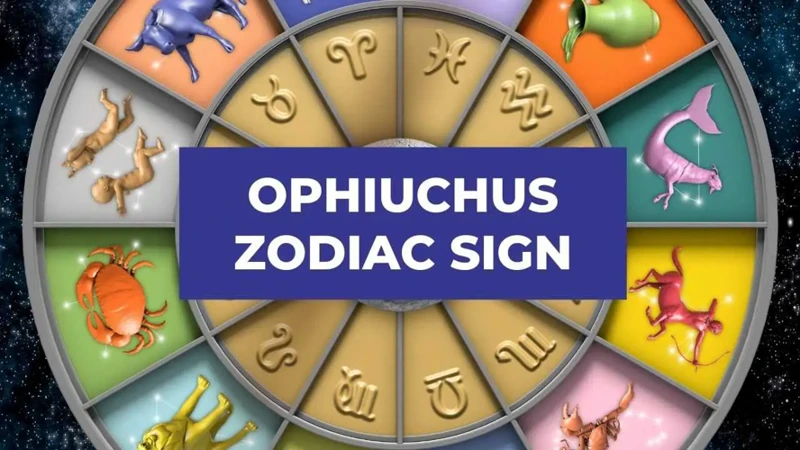
1. What are the Nine Worlds in Norse mythology?
In Norse mythology, the Nine Worlds are a collection of realms or dimensions that make up the cosmos. These worlds include Asgard, the home of the gods, Midgard, the realm of humans, Jotunheim, the land of the giants, and six others with their own unique characteristics and inhabitants.
2. Who is Ymir and what role does he play in the creation of the Nine Worlds?
Ymir is the first giant in Norse mythology. He was born from the convergence of fire and ice and is said to be the progenitor of all giants. Ymir’s body played a crucial role in the creation of the cosmos as his flesh was used to form the earth, his blood became the oceans, and his bones were transformed into mountains.
3. Who are the creators of the cosmos in Norse mythology?
The creators of the cosmos in Norse mythology are Odin, Vili, and Ve. These three brothers, sons of Bor and Bestla, defeated Ymir, the first giant, and used his body to fashion the various realms and elements of the Nine Worlds.
4. What is the significance of Midgard in Norse mythology?
Midgard, also known as Earth, is considered the central realm of the Nine Worlds. It is inhabited by humans and acts as a bridge between the different realms. Midgard serves as a battleground for gods, giants, and other mythical beings, where epic battles and adventures take place.
5. What are the other realms besides Asgard and Midgard?
Alongside Asgard and Midgard, the other realms in Norse mythology are Niflheim (the world of ice and darkness), Muspelheim (the world of fire and heat), Jotunheim (the realm of the frost giants), Vanaheim (the home of the Vanir gods), Alfheim (the realm of the light elves), Svartalfheim (the domain of the dwarves), and Helheim (the realm of the dead).
6. Who are the Aesir and the Vanir?
The Aesir and the Vanir are two distinct groups of gods in Norse mythology. The Aesir, including Odin, Thor, and Loki, are associated with war, wisdom, and rulership. The Vanir, such as Freya and Njord, are connected to fertility, nature, and abundance. They were initially rival factions but later made peace and merged their pantheons.
7. What role do the dwarves play in the Norse cosmos?
Dwarves, the skilled craftsmen of Norse mythology, reside in Svartalfheim. They are renowned for their ability to create powerful artifacts, weapons, and other items of great significance. The gods often seek the dwarves’ assistance in crafting items that aid them in their quests and battles against the giants.
8. How do the gods and giants interact in Norse mythology?
The gods and giants in Norse mythology have complex and often contentious relationships. While some giants are seen as threats and adversaries to the gods, others form alliances or even intermarry with them. The interactions between gods and giants often result in epic battles and conflicts, shaping the fate of the Nine Worlds.
9. What is the purpose of the Nine Worlds in Norse mythology?
The Nine Worlds serve as the backdrop for the epic tales and adventures that make up Norse mythology. They provide distinct realms for gods, giants, and other mythical beings to dwell, interact, and embark on their heroic quests. Additionally, the Nine Worlds represent the interconnectedness of different aspects of existence and the cosmic balance within the Norse cosmos.
10. Are the Nine Worlds of Norse mythology similar to other mythological cosmologies?
While there may be similarities to other mythological cosmologies, such as the realms of gods and humans, the Norse Nine Worlds have their own unique characteristics and mythological pantheon. The Norse cosmology offers a rich tapestry of distinct realms, fantastical creatures, and complex interactions, setting it apart and making it a fascinating and distinct mythological tradition.
References
- Exploring the Nine Realms of Norse Mythology: A Cosmic …
- Norse Mythology
- Exploring Norse Mythology: Unravel the Fascinating Myths …
Frequently Asked Questions

1. What are the Nine Worlds in Norse mythology?
The Nine Worlds are the interconnected realms that make up the Norse cosmos. They include Asgard, the realm of the gods; Midgard, the realm of humans; Jotunheim, the realm of giants; and six other unique realms, each with its own distinct characteristics and inhabitants.
2. How were the Nine Worlds created?
According to Norse mythology, the Nine Worlds were created when the primordial giant Ymir was slain by Odin and his brothers. Ymir’s body was used to form the different realms, and his blood became the rivers and oceans.
3. Who is Odin, the Allfather?
Odin, also known as the Allfather, is the chief god in Norse mythology. He is associated with wisdom, poetry, war, and magic. Odin is often depicted with his iconic spear, Gungnir, and his two ravens, Huginn and Muninn.
4. What is the role of Thor, the God of Thunder?
Thor is a powerful god in Norse mythology and is known as the God of Thunder. He wields the mighty hammer Mjolnir and is the protector of both gods and humans. Thor is often called upon to defend Asgard against the giants and other threats.
5. Who is Freya, the Goddess of Love and Beauty?
Freya, the daughter of the Vanir gods, is a popular figure in Norse mythology. She is the Goddess of Love, Beauty, and Fertility. Freya is associated with both war and fertility, and she possesses a magical necklace called Brisingamen.
6. What is Loki known for in Norse mythology?
Loki, the Trickster God, is a complex and fascinating figure in Norse mythology. He is known for his cunning and shapeshifting abilities, as well as his mischievous nature. Loki often causes trouble for the gods but also helps them out of difficult situations.
7. Who was Ymir, the First Giant?
Ymir is considered the first giant and the primordial being in Norse mythology. According to the creation story, Ymir emerged from the primordial void and was eventually killed by Odin and his brothers. Ymir’s body was then used to create the world.
8. Who are the Jotnar, the Frost Giants?
The Jotnar, also known as the Frost Giants, are a race of powerful and formidable giants in Norse mythology. They inhabit the icy realm of Jotunheim and often come into conflict with the gods, especially Thor.
9. What is the significance of the Ragnarok prophecy?
The Ragnarok prophecy foretells the end and rebirth of the world in Norse mythology. It describes a great cosmic battle between the gods and giants, leading to the destruction of the Nine Worlds. However, from the ashes of Ragnarok, a new world will emerge and be repopulated by surviving gods and humans.
10. How does Norse mythology continue to influence modern culture?
Norse mythology has had a lasting impact on modern culture, particularly in literature, art, and popular media. Many well-known fantasy stories draw inspiration from Norse mythology, and its themes and characters continue to captivate audiences around the world.
References
- Exploring Norse Mythology: Unravel the Fascinating Myths …
- Norse Mythology
- Exploring the Nine Realms of Norse Mythology: A Cosmic …






